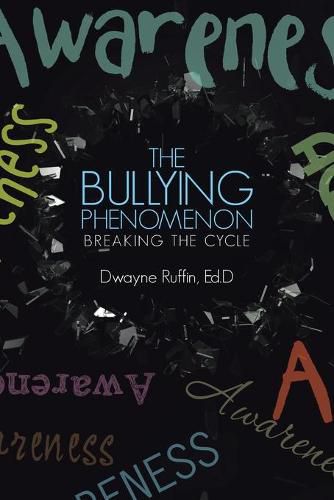Readings Newsletter
Become a Readings Member to make your shopping experience even easier.
Sign in or sign up for free!
You’re not far away from qualifying for FREE standard shipping within Australia
You’ve qualified for FREE standard shipping within Australia
The cart is loading…






This title is printed to order. This book may have been self-published. If so, we cannot guarantee the quality of the content. In the main most books will have gone through the editing process however some may not. We therefore suggest that you be aware of this before ordering this book. If in doubt check either the author or publisher’s details as we are unable to accept any returns unless they are faulty. Please contact us if you have any questions.
Student bullying exists as an egregious, insidious, and antisocial behavior that traumatizes millions of students each year. Bullying is a widespread problem that has its greatest impact and prevalence during middle school and high school years.
The effects of bullying are well documented and include negative impacts on student development and academic achievement. Bullying consequently causes psychological harm as well as a lack of normative social interactions and maladaptive outcomes for children who engage in bullying. As an effective intervention, the author developed the Bullying Resolution Model.
The Bullying Resolution Model is solution driven. The model components consist of five core-driving forces embedded within the bullying cycle, purposefully designed to achieve a resolution. Primarily, the bullying resolution model is dynamic in nature. The Bullying Resolution Model attribute is based on the premise of reaching a resolution by means of vigorous activity through acquiring social and emotional competency interaction skills.
The synergistic feature of the model guides the facilitator through the resolution process for maximum effectiveness. Consequently, the bullying model components can address multilevel conflicts ranging from minor inappropriateness to sever or even complex dilemmas. Giving much-needed support and interventions to the facilitator in confronting the apparent bully or bullies, monitor setbacks, and progress to resolution of the conflicted parties.
$9.00 standard shipping within Australia
FREE standard shipping within Australia for orders over $100.00
Express & International shipping calculated at checkout
Stock availability can be subject to change without notice. We recommend calling the shop or contacting our online team to check availability of low stock items. Please see our Shopping Online page for more details.
This title is printed to order. This book may have been self-published. If so, we cannot guarantee the quality of the content. In the main most books will have gone through the editing process however some may not. We therefore suggest that you be aware of this before ordering this book. If in doubt check either the author or publisher’s details as we are unable to accept any returns unless they are faulty. Please contact us if you have any questions.
Student bullying exists as an egregious, insidious, and antisocial behavior that traumatizes millions of students each year. Bullying is a widespread problem that has its greatest impact and prevalence during middle school and high school years.
The effects of bullying are well documented and include negative impacts on student development and academic achievement. Bullying consequently causes psychological harm as well as a lack of normative social interactions and maladaptive outcomes for children who engage in bullying. As an effective intervention, the author developed the Bullying Resolution Model.
The Bullying Resolution Model is solution driven. The model components consist of five core-driving forces embedded within the bullying cycle, purposefully designed to achieve a resolution. Primarily, the bullying resolution model is dynamic in nature. The Bullying Resolution Model attribute is based on the premise of reaching a resolution by means of vigorous activity through acquiring social and emotional competency interaction skills.
The synergistic feature of the model guides the facilitator through the resolution process for maximum effectiveness. Consequently, the bullying model components can address multilevel conflicts ranging from minor inappropriateness to sever or even complex dilemmas. Giving much-needed support and interventions to the facilitator in confronting the apparent bully or bullies, monitor setbacks, and progress to resolution of the conflicted parties.